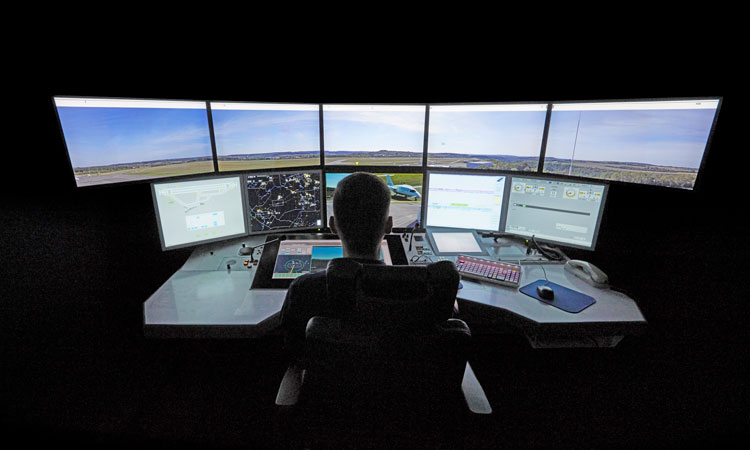More than one year of remote control at Saarbrücken
- Like
- Digg
- Del
- Tumblr
- VKontakte
- Buffer
- Love This
- Odnoklassniki
- Meneame
- Blogger
- Amazon
- Yahoo Mail
- Gmail
- AOL
- Newsvine
- HackerNews
- Evernote
- MySpace
- Mail.ru
- Viadeo
- Line
- Comments
- Yummly
- SMS
- Viber
- Telegram
- Subscribe
- Skype
- Facebook Messenger
- Kakao
- LiveJournal
- Yammer
- Edgar
- Fintel
- Mix
- Instapaper
- Copy Link
Posted: 17 June 2020 | DFS Deutsche Flugsicherung, Saarbrücken Airport | No comments yet
Saarbrücken Airport and DFS Deutsche Flugsicherung inform International Airport Review of the positive outcomes from implementing a remote digital tower.


Germany’s air navigation service provider, DFS, takes stock after more than one year of remote tower control (RTC) operations at Saarbrücken International Airport – and the result is positive.
Over the course of a 12-month period, air traffic controllers have controlled over 15,000 flights safely from the company’s RTC centre in Leipzig, located 450km away. This corresponds to over 11,000 hours of remote tower operations. Overall, more than 375,000 passengers have travelled safely to various destinations in Europe, ranging from Tenerife to Antalya, as well as further abroad to Egypt. Saarbrücken Airport is currently the largest airport in the world operating in regular RTC operations.
One year of remote digital tower experience
“When we started operations, we declared the first four weeks the introductory weeks, during which we were prepared to reopen the tower in Saarbrücken again in case of a failure. But, at no time was this needed,” said Alexander Koch, Director of the Tower Division at DFS.
The concept of operations is tailored to the needs of air traffic controllers. Andreas Willmann, Supervisor and Air Traffic Controller working in Leipzig, said: “I was involved in the development of the system from the beginning. Later on, during the transition phase, we had simulator training and shadow-mode training. The main focus was to get used to working with the system under heavy traffic conditions. During the shadow mode, we were working with the actual traffic right at that moment at the airport, but without talking to the pilots.”
The RTC centre brings profound changes for the air traffic controller’s working environment. The usual ATC systems are complemented by the out‑of‑the‑window view. An advanced camera system with high‑definition video and infrared cameras delivers a permanent 360-degree view of the airport. The controllers can adjust the view between 190 and 360 degrees to the traffic situation and switch between full high definition (HD) and infrared views. In addition, the system can automatically detect movements and highlight up to 256 objects in parallel. Complementary pan‑tilt‑zoom cameras can track objects and work like automatic binoculars. High‑performance sensors mean the system can deliver safe and efficient operations in both good and adverse visual meteorological conditions.


“I like that the zoom cameras have different zoom settings, something binoculars don’t have,” said Wiebke Hackstein, Air Traffic Controller at Leipzig. She describes the infrared camera and infrared panorama as very helpful: “It gives you more details during darkness.”
Saarbrücken Airport’s perspective of the tower
At Saarbrücken Airport, the transition from conventional to remote tower has been well received. Managing Director at Saarbrücken Airport, Thomas Schuck, is pleased about the “close and excellent cooperation” with DFS, especially during the intensive preparation phase. After one year of smooth RTC operations, he is proud to say that Saarbrücken is the first and largest airport to benefit from this forward‑looking project of DFS.
Next steps into a digital future
DFS is constantly developing the system further in order to steadily improve the situational awareness for air traffic controllers. Resilient system functionalities are key to obtaining their acceptance.
DFS is also currently working on adding more German airports to the RTC centre in Leipzig. Erfurt Airport will be connected in 2021, followed by Dresden Airport.
These additions will enable DFS to exploit the full potential of RTC and increase efficiency. As soon as the controllers have been cross‑trained to provide the service to the three airports during different shifts, DFS will save costs for air traffic control equipment and tower maintenance and will be able to plan controller shifts more flexibly thanks to synergies.
For the controllers, the job will become more attractive, more digital and more modern. It will offer more variety than is the case today at similar medium‑sized single-runway locations.
Taking stock
DFS experienced a steep learning curve during the implementation. But, as is often the case when introducing the latest cutting-edge technologies, the fundamental skills and approaches learnt over decades in the business are still the ones that help you through today.
Issue
Related topics
Air traffic control/management (ATC/ATM), Airside operations


















